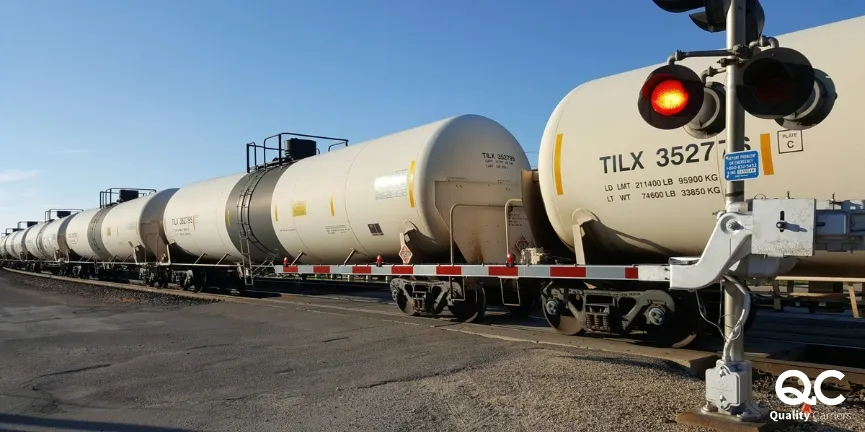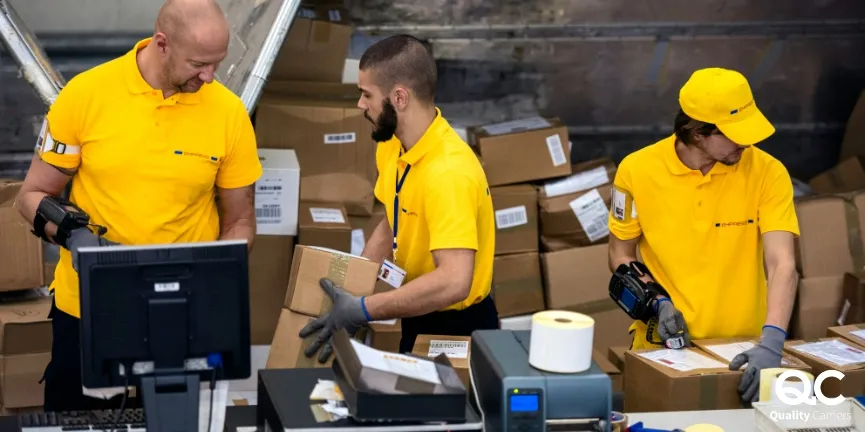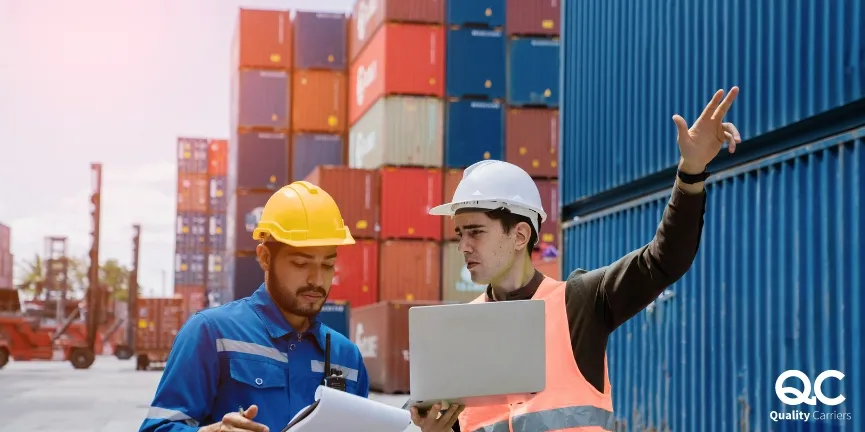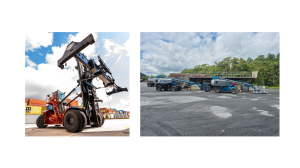Liquid chemical transport is a complex and highly regulated process that requires specialized equipment, trained personnel, and strict adherence to safety standards. The goal is to ensure that these potentially hazardous materials are moved safely and efficiently from their point of origin to their final destination.
This blog will explore the methods and practices used in chemical transport, the role of chemical transport companies, and the key considerations involved in transporting chemicals.
The Importance of Proper Chemical Transport
Liquid chemicals are used in various industries, including manufacturing, pharmaceuticals, agriculture, etc. These substances can be hazardous, corrosive, flammable, or toxic, making safe transport crucial to preventing accidents, environmental damage, and health risks. Chemical transport is, therefore, governed by strict regulations to protect both the public and the environment.
Different Containers for Transporting Liquid Chemicals
Transporting liquid chemicals requires specialized methods and equipment to ensure safety and compliance with regulations. Here are the most common methods:

ISO Tank Containers
ISO tank containers are cylindrical, stainless steel containers housed within a protective steel frame. They are designed to safely transport bulk liquids, including hazardous chemicals, by road, rail, or sea. ISO tanks meet international safety standards, making them a versatile and reliable option for long-distance chemical transport.
Drums and Barrels
Drums and barrels transport smaller quantities of liquid chemicals. These containers are leak-proof and corrosion-resistant and made from materials like steel, plastic, or fiber. They are ideal for short-distance transport or for chemicals that do not require bulk shipment.
Intermediate Bulk Containers (IBCs)
Intermediate Bulk Containers (IBCs) are large, reusable containers that transport and store bulk liquids—typically made of high-density polyethylene (HDPE) and often encased in a metal cage, IBCs balance capacity and ease of handling, making them suitable for various liquid chemicals.
Rail Tank Cars
Rail tank cars are specialized rail vehicles that transport large volumes of liquid chemicals over long distances. They are built to withstand the rigors of rail transport and are equipped with safety features. These will prevent leaks and spills, making them ideal for bulk shipments across regions or countries.
Tanker Trucks
Tanker trucks transport liquid chemicals on the road, particularly for domestic deliveries. These trucks have cylindrical tanks made of materials like stainless steel or aluminum, designed to carry various chemicals safely. Some tanker trucks are insulated or equipped with heating systems to maintain the required temperature of the substances during transit.
Challenges of Liquid Chemical Transportation
Legal Leakages
One of the primary concerns in chemical transport is the potential for leaks during transit. Even minor leaks can lead to significant environmental and legal consequences. Ensuring the integrity of containers and equipment is crucial to prevent such incidents.
Weight
The weight of liquid chemicals can vary significantly, and overloading a transport vehicle can lead to accidents or damage to infrastructure. Properly managing the load’s weight distribution is essential to maintaining safety during transport.
Temperature
Many liquid chemicals are sensitive to temperature changes, affecting their stability and safety. Maintaining the appropriate temperature throughout the journey is critical, particularly for chemicals prone to freezing, overheating, or reacting to temperature fluctuations.
The Role of Chemical Transport Companies
Chemical transport companies play a crucial role in ensuring liquid chemicals’ safe and efficient movement. These companies are responsible for complying with regulations, managing logistics, and providing the specialized equipment and trained personnel needed for transporting chemicals. Here are some of the critical services offered by chemical transport companies:

Regulatory Compliance
Chemical transport companies must adhere to various regulations, including those set by the Department of Transportation (DOT), Environmental Protection Agency (EPA), and other relevant authorities. Compliance of these regulations is essential to ensure the safe transport of chemicals and to avoid legal penalties.
Specialized Equipment
These companies provide the necessary equipment, such as ISO tanks, tanker trucks, and IBCs, to safely transport liquid chemicals. They also ensure this equipment is properly maintained and inspected to prevent accidents and leaks.
Trained Personnel
Transporting chemicals requires specialized knowledge and training. Chemical transport companies employ drivers and handlers trained in handling hazardous materials (HAZMAT), spill response, and emergency procedures. This training is critical to ensuring the safety of the transport process.
Logistics Management
Effective logistics management is vital for the timely and safe delivery of liquid chemicals. Chemical transport companies coordinate the entire transport process, from scheduling and routing to monitoring the shipment and ensuring that it arrives at its destination without incident.
Key Considerations When Transporting Chemicals
Transporting liquid chemicals involves several important considerations to ensure safety and compliance:

Proper Labeling and Documentation
Accurate labeling and comprehensive documentation are essential for safe chemical transport. Labels should indicate the contents, hazards, and handling instructions. Documentation should include all necessary regulatory paperwork, such as Material Safety Data Sheets (MSDS).
Spill Prevention and Containment
Preventing spills is a top priority in transporting chemicals. Using leak-proof containers, secure seals, and regular inspections can help minimize the risk of spills. Additionally, having spill containment measures in place, such as spill kits and trained personnel, is crucial for managing any incidents that do occur.
Temperature Control
Maintaining the correct temperature during transport is vital for ensuring the stability of liquid chemicals. Insulated containers, temperature-controlled environments, and monitoring systems can help keep chemicals within the desired temperature range throughout the journey.
Load Securement
Properly securing the load is critical to preventing movement during transit, which can lead to spills, leaks, or accidents. Ensuring that containers are tightly secured and evenly distributed weight can help maintain stability during transport.
Route Planning
Careful route planning is essential for avoiding high-risk areas, such as densely populated regions or environmentally sensitive zones. Planning the most direct and safest route can minimize the risk of accidents and ensure timely delivery.
Regulations and Legal Considerations for Transporting Liquid Chemicals
Hazardous Materials Regulations
The transportation of liquid chemicals is governed by Hazardous Materials Regulations (HMR), which set out the requirements for packaging, labeling, handling, and transporting hazardous materials. These regulations are mandatory to ensure safety and avoid legal penalties.
Environmental Regulations
Environmental regulations protect the environment from the potential risks associated with chemical transport. These regulations mandate containment measures, spill response plans, and proper disposal of chemical waste.
Transportation Security Regulations
Security is a crucial concern when transporting hazardous chemicals. Transportation Security Regulations require measures to prevent unauthorized access, tampering, or theft of chemicals during transit. This includes background checks for personnel, secure transport routes, and monitoring systems.
International Regulations
Compliance with international regulations from the International Maritime Dangerous Goods (IMDG) Code and the International Air Transport Association (IATA) Dangerous Goods Regulations is essential for cross-border shipments. These regulations harmonize the safe transport of chemicals across different countries and modes of transport.
Conclusion
Transporting liquid chemicals is a complex process that requires specialized knowledge, equipment, and strict adherence to safety regulations. Chemical transport companies play a vital role in managing this process, ensuring that chemicals are transported safely and efficiently. Whether using ISO tanks, tanker trucks, or other methods, the key to successful chemical transport lies in careful planning, regulatory compliance, and a commitment to safety. By understanding the methods and considerations involved in transporting chemicals; companies can minimize risks and ensure the safe delivery of these critical materials.
FAQs
Transporting liquid chemicals requires comprehensive documentation, including the Material Safety Data Sheet (MSDS), shipping papers, hazard labels, and permits. These documents provide information on the chemical’s properties, handling instructions, emergency procedures, and regulatory compliance.
Hazardous chemicals pose risks to health, safety, or the environment and require special handling and transportation procedures due to their toxic, flammable, or corrosive properties. Non-hazardous chemicals do not present significant risks under normal conditions and are subject to less stringent regulations during transport.
Yes, chemicals can be transported overseas by maritime or air transport. Maritime transport is standard for large volumes, using specialized tankers, while air transport is used for smaller, time-sensitive shipments. Compliance with international regulations like the IMDG Code and IATA Dangerous Goods Regulations is required.




